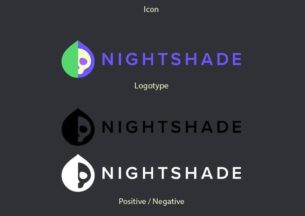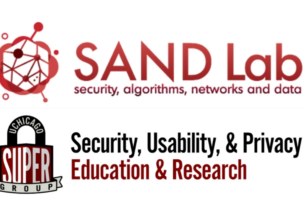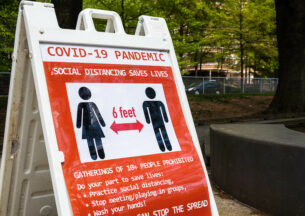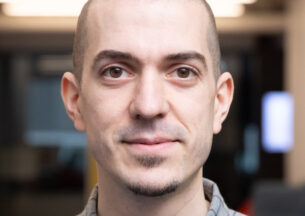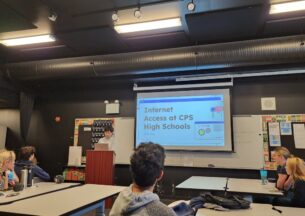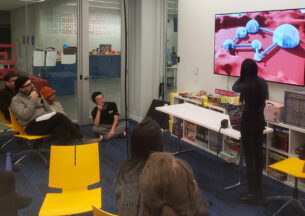UChicago Workshop Highlights Internet Frontiers and Opportunities

In the wake of COVID-19, it’s clear that broadband internet is an essential utility. The pandemic has hit the fast-forward button on many connected activities, from remote school and work to telemedicine, precision agriculture, and streaming entertainment. For the millions of people in the U.S. and the billions worldwide who still lack access to reliable and affordable high-speed internet, the “digital divide” will only get wider without coordinated efforts to bring them online.
At the inaugural Internet Frontiers and Opportunities Workshop, held in Chicago November 15th, participants moved past the “why” of improving broadband equity to the “how.” Many of the event’s speakers emphasized that the solution would not simply come from computer science and engineering, but needed social science, domain expertise, and cooperation with unconnected communities, be they farmers in India, older adults in need of remote health care, or inner city families.
The gathering, hosted by the University of Chicago and the University of California, Santa Barbara, brought together experts from industry, government, and academia for panels and conversations around these goals. The day’s discussion covered everything from how to accurately map who does and doesn’t have broadband access to the relative pros and cons of wired internet, 5G, and satellite to how best to engage populations reluctant to use online resources.
Systemic Change for a Systemic Problem
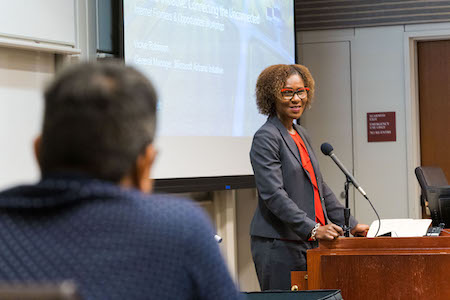
All of these questions were laid out in a keynote address by Vinton Cerf, known as the “father of the internet” for his early work on its ancestor, ARPAnet. Cerf focused on measuring “internet readiness,” a set of factors that goes beyond mapping where broadband is and isn’t currently available. These parameters include cost and affordability, performance, the physical topography of the area, and the readiness of the local community to make use of the internet, he said.
“Our efforts to determine whether and how internet access should be pursued are dependent on getting good quality data about the conditions that will make that particular deployment successful.” Cerf said. “In the end, all of those various parameters have to add up to something that is affordable by the market, sustainable by the operators, and reliable.”
Even the simple question of how many people in the U.S. and worldwide currently utilize high-speed internet remains open. The event’s second keynote speaker, Vickie Robinson of Microsoft’s Airband Initiative, said that the official total is 14.5 million Americans without broadband access, but the company’s data estimates that nearly ten times that figure, 120 million, are still using slower internet speeds. That has huge ramifications for improving digital equity, she said.
“The pervasive broadband gap disproportionately affects people experiencing income and housing insecurity, racial and ethnic minorities, people with disabilities, women and girls and other traditionally marginalized groups,” Robinson said. “We need systemic change to solve a systemic problem, and we need all hands on deck to permanently address the digital divide.”
Moonshots and Invisible Costs
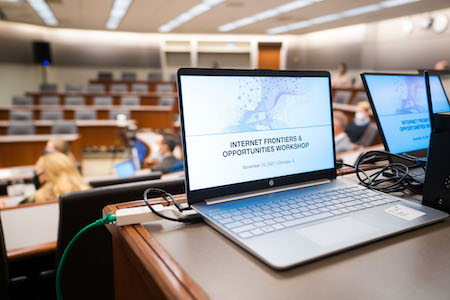
Those goals align with the mission of the Internet Access & Equity Initiative, a Data Science Institute (DSI) effort led by UChicago CS Professor Nick Feamster, Faculty Director of Research at the DSI. Feamster, who co-organized the workshop with Julia Lane of the DSI, Arpit Gupta of UCSB and Mallik Tatipamula of Ericsson, stressed that closing the digital divide was this generation’s “moonshot,” emphasizing that holistic solutions are needed.
“There are a bunch of pieces to the puzzle here,” Feamster said. “We don’t really know how they fit together, but we know what a lot of the pieces are, and figuring out how those pieces fit together to make progress is really what we’re here to talk about and start to figure out.”
The panels led by Feamster and his collaborator Nicole Marwell, associate professor at the UChicago Crown Family School of Social Work, Policy, and Practice and DSI Affiliated Scholar, focused on how to accurately collect the most important data in a world that has rapidly shifted towards online activities. Currently, the initiative is measuring internet speed and performance in households across Chicago, and working with the city government and community groups on the best policies and incentives to improve access and utilization in underserved areas.
Marwell’s panel on education and workforce development stressed the importance of these improvements. Ellen Goldich, program director at EducationSuperHighway, described how 55 million American children were abruptly shifted to remote schooling in 2020, when 15 million of those did not have internet access at home. Elaine Allensworth, Lewis-Sebring Director of the UChicago Consortium, talked about how the pandemic jump-started educational innovation, but also highlighted the need for training and thoughtful rollouts of technology that consider the needs and concerns of families.
“Even with free internet and giving out devices, equity issues still exist,” Allensworth said, referring to the Chicago Connected program that provided resources for CPS students during the pandemic. “There are always marginal costs or concerns that, for a lot of the people who are rolling out the service, would be invisible.”
The Start of The Last Mile
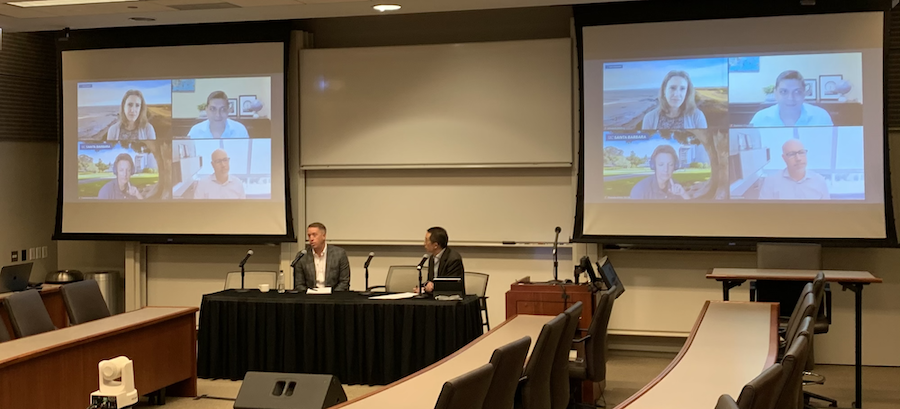
While the digital divide is often described in terms of improving access in inner cities, connectivity may be even more insufficient in rural areas, where priorities and potential solutions can be very different. For example, the acceptance of “precision agriculture” among farmers has lagged due to a lack of reliable internet with sufficient bandwidth in farm fields to handle the flow of data off sensors and connected equipment. An agriculture panel including representatives from Microsoft and John Deere discussed whether farmers — and others in remote rural areas — would be better served by alternatives to wired internet, such as 5G or satellite providers.
“It’s not just about getting any access there, it’s about getting quality access,” said Elizabeth Belding, Professor of Computer Science at UCSB. “Just because an area is covered by internet access, it doesn’t mean that it performs well enough to support the types of applications that are needed for precision agriculture”
As the American population ages, older adults will need more connectivity to utilize health technology such as remote monitors and telehealth appointments. At the workshop, members of a healthcare panel emphasized the human side of improving access. Valerie Press, associate professor of medicine and pediatrics at University of Chicago Medicine, presented on gaps in eHealth literacy, while UChicago assistant professor of computer science Marshini Chetty talked about how simply supplying the resources for telehealth (which she helped do as a student in South Africa) isn’t enough.
“You need to have stakeholders engaged,” Chetty said, arguing for participatory processes in designing and implementing new technologies. “Without simple considerations about the types of access people have and what their needs are, you can’t succeed with vulnerable and marginalized users.”
The workshop ended with a panel and discussion focused on the most pressing needs for research and innovation around improving broadband access and applications built on connectivity. The co-organizers proposed a multi-disciplinary center of innovation, drawing from government, industry, and academia, that could tackle these questions in all of their complexity, producing unique and effective solutions that no single sector could achieve alone. Telecommunications engineers often talk about the difficult “last mile” problem of bringing services to remote locations. For internet equity, it’s clear that this final step has only just begun.
Photos by Eric Clarke from Surecast



